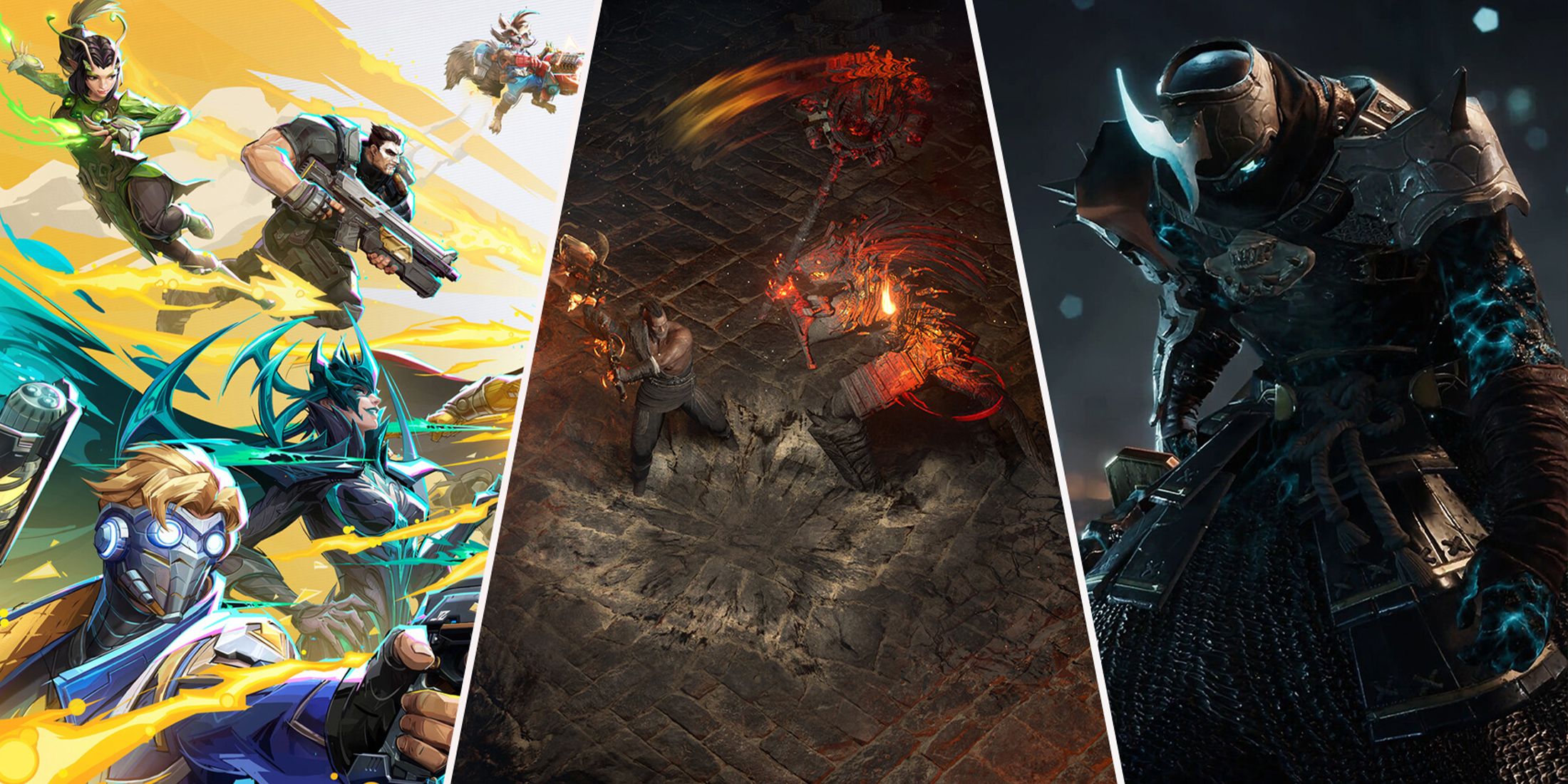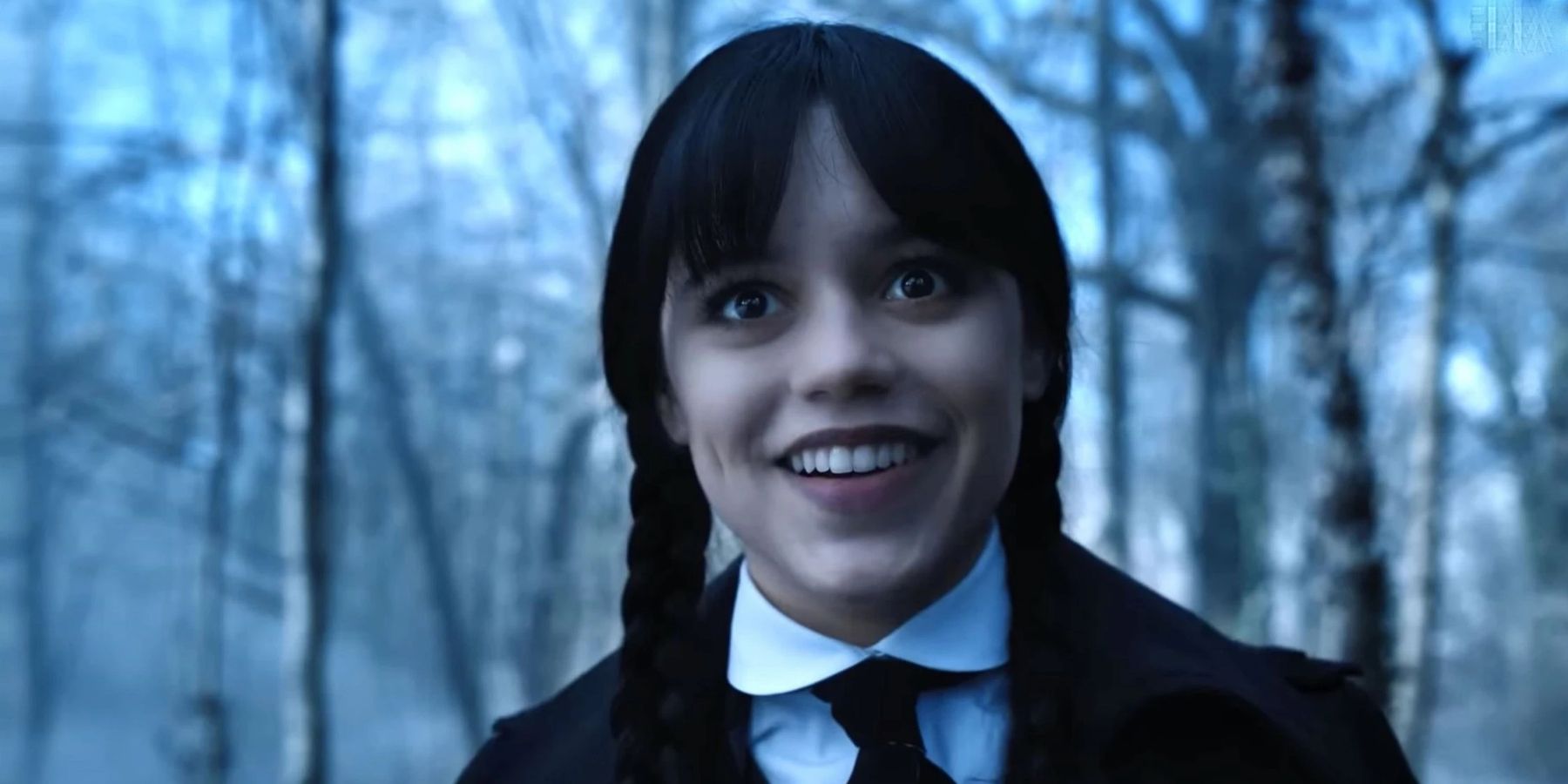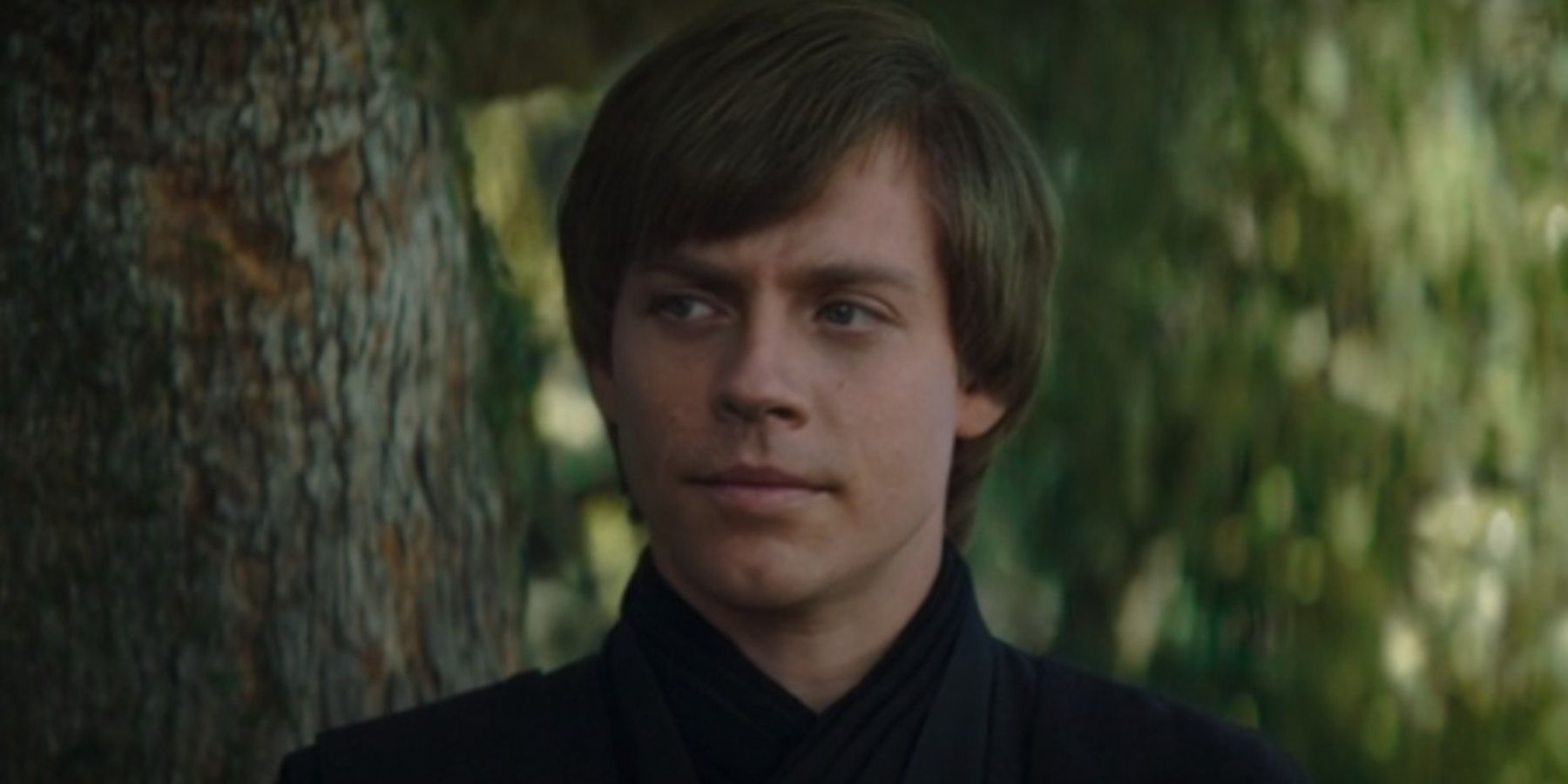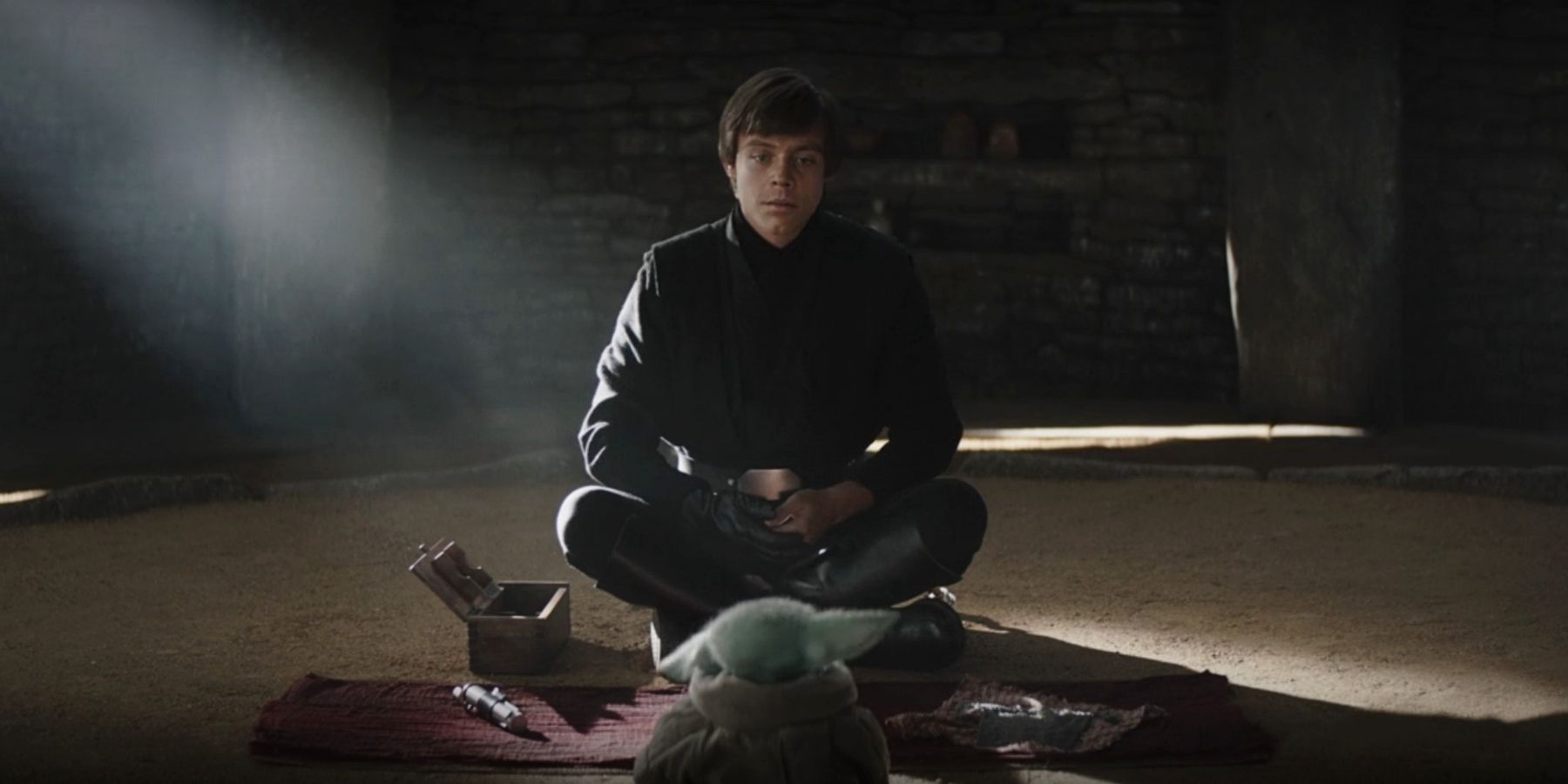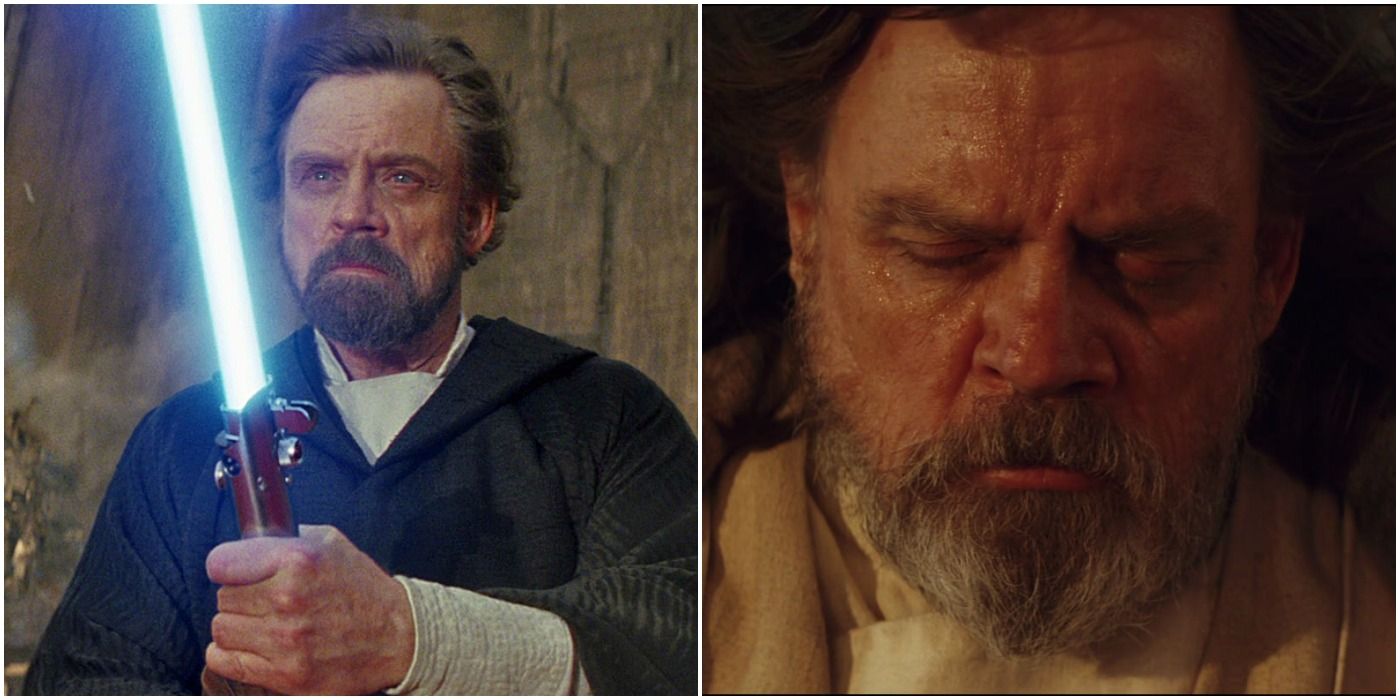Luke Skywalker returned in The Book of Boba Fett, a little over a year after his appearance in The Mandalorian season 2 finale. The Jedi Knight certainly looked better, with a massive improvement of the deepfake technology used to bring a young Mark Hamill back to life.
Still, there’s something missing from the character. Along with Luke’s look (or the face at least) being made entirely from special effects, the character’s voice also derives from technology. While it’s certainly an impressive feat, it also leaves Luke feeling quite robotic, almost droid-like, to use Star Wars terms. Ultimately, Star Wars TV’s Luke Skywalker is lacking an actor’s performance.
At the center of Luke’s character in the Original Trilogy is a sense of inherent humanity. In A New Hope, for example, he’s the hero, and it’s his journey that audiences are watching unfold. As the hero, Luke is relatable: a young person reaching the age of maturity and becoming an adult, longing to do something with his life and make something of himself. These are all relatable feelings for people in the real world, hence why Luke has always been labeled as the more relatable character to fans, while Han Solo has been thought of as the cool guy, almost what some wanted to be at a young age.
Mark Hamill’s performance in A New Hope solidifies this heartfelt feeling to the character. Hamill is young, excitable and engaged, reacting to things like Obi-Wan showing him Anakin’s lightsaber in a way similar fans would respond to. Obi Wan’s death, for example, is a key moment in the first film that is highly emotional, despite not knowing the older version of the character for an extended period of time. In 1977, with no prequel films to expand upon Kenobi as a character, it was feasible that a moment like this death scene could fall flat, even as Obi-Wan is likable and kind in this outing. However, given how much Hamill’s performance, and the writing, makes the audience truly feel for the character, and a lot of the emotion that comes from Kenobi’s passing is knowing how much he meant to Luke, and how devastated he is. Along with excellent writing by George Lucas, it’s Mark Hamill that brings this humanity to Luke in A New Hope.
Mark Hamill also did the same in the other two Original Trilogy films, The Empire Strikes Back and Return of the Jedi. Again, relatable themes were explored, like tension between father and son, making difficult decisions, and more. Hamill and his performance in these latter two films was the crux of these themes being well explored. In sum, it was Hamill who made these themes work, successfully integrating them and the struggles that comes with them into his character.
Star Wars: The Last Jedi is arguably Hamill’s best performance as Luke Skywalker. He’s vastly different from the Original Trilogy, something that still angers many fans over four years after the release of the film. Luke is older, wiser due to his experiences, and failings, as a Jedi Master with a young Ben Solo. Failure is a key theme in The Last Jedi. Finn and Rose’s mission is not successful, and Poe’s plotline aboard the Resistance ship is also a failure, as he’s unaware of Admiral Holdo’s real plan to save the Rebels. Even Rey and her trip to Ahch-To was, by all accounts, unsuccessful, as Luke did little training with her as a reluctant teacher.
Luke Skywalker left the known regions to go to Ahch-To because of his failings with Ben Solo. The once hopeful, youthful Jedi is now shut off from the Force, and a shadow of the person he once was. Many fans weren’t fond of this, as previously stated, but these complaints seem to be conceptual in nature. Many simply disagreed with the idea of Luke acting this way, despite some solid execution with Rian Johnson’s writing. Writing only goes so far, though, and Mark Hamill was tasked with bringing all of this home and to make Luke a significantly more complex character than he was in the Original Trilogy.
Some still say that Luke doesn’t feel consistent with the older version of the character, which is understandable given just how different he is, but amidst all the discourse surrounding The Last Jedi, few have taken issue with Mark Hamill’s performance. Despite being so bitter and negative. Hamill still infuses the character with relatability, humanity, and heart. Hamill is truly excellent in this film, with his performance here a highlight of the Sequel Trilogy overall.
Over the course of several Star Wars films, Hamill has proven to be an excellent actor. From a young, inexperienced teenager, to a more assured adult growing into his own, to an older downbeat man, Hamill has displayed excellent range over the course of this 40+ year saga. It’s exactly this touch that Luke Skywalker in The Book of Boba Fett is missing.
A younger Luke was recreated almost entirely by technology to bring the character at this time in his life back to screens. His look and his voice are products of new, innovative technology that, admittedly, seems to be improving rapidly. Still, his voice in particular was an issue in The Book of Boba Fett. It sounds too robotic, and not enough like Mark Hamill. Ultimately, stand in Scott Lang’s body movements are the only crumbs of an actor’s performance underneath the technology, and it’s simply not enough.
Mark Hamill sounds older than he did in Return of the Jedi, so it makes sense that Lucasfilm opted not to use his modern voice. However, having Hamill, an incredibly successful voice actor, record Luke’s lines and then de-aging his voice would add more emotion and heart to the character that the actor brought in the first place. Hamill also has a similar stature and body shape that he did in the 1980s, so he could also even play the character in the flesh without the use of a stand-in. All of this would ultimately add a performance to Luke Skywalker that is needed to bring back the true heart of the character.
There are other options to add an actor’s performance. In recent years, there have been plenty of voice actors that have lent their talent to various Star Wars projects to portray Luke, with Star Wars: Battlefront II a prime example of this. Luke appears in the campaign of the game, even looking extremely similar to how he does in The Book of Boba Fett. The voice of Luke in that game, provided by Matthew Mercer, sounds similar to the character in the original films. Despite not being an exact replica of Luke’s voice, it’s certainly close, and sounds much more natural than the AI-created voice in The Book of Boba Fett. Mercer could come back to voice the character, and if he did, there would be some semblance of an actor’s performance and humanity brought to the role once again. There are also plenty of other actors who could voice Luke, perhaps even a performer who also opts as a stand in as well. This route especially would add the heart and emotion lacking from Luke, and free the character from the robotic voice that takes away from the Jedi’s return on TV.
Luke Skywalker now has a recurring role on Star Wars TV, even across multiple shows, and is an important character in the mini-universe of The Mandalorian. Despite improving technology to make Luke’s face look more real, the character still feels robotic and lacking the humanity that Mark Hamill brought to the role. Ultimately, Luke needs an actor’s performance to bring back the heart of the character.


